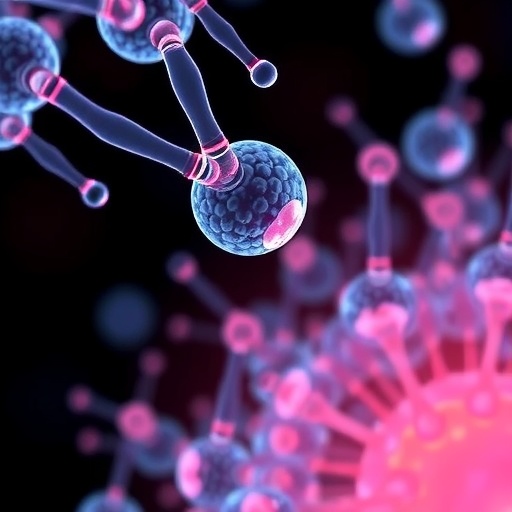Scientists have made a breakthrough in the field of metabolic engineering, introducing a novel technique that leverages ultrasound-responsive nanovesicles to facilitate metabolic reprogramming. This innovative method, developed by a research team led by Dr. J.C. Hsu, provides a robust platform for enhancing the metabolic activity of cells in a controlled and targeted manner. The implications of this research could be transformative, particularly in the areas of drug delivery, tissue engineering, and regenerative medicine.
The essence of this research lies in understanding how ultrasound waves can interact with these specially engineered nanovesicles. These vesicles are designed to respond to ultrasound, allowing them to change shape and release their contents at precise moments. This controllability offers researchers the ability to orchestrate cellular processes, fundamentally changing how we approach cellular therapies and drug development.
Ultrasound as a tool for biological manipulation has existed for some time, but the application of ultrasound-responsive nanovesicles is relatively novel. Researchers postulate that this method not only enhances cellular uptake of therapeutic agents but also protects these agents from degradation before they reach their target site. This capability addresses a significant challenge in traditional drug delivery systems, potentially leading to improved efficacy and reduced side effects for patients.
The nanovesicles developed by the team are composed of biocompatible materials, which make them suitable for in vivo applications. The researchers meticulously designed these vesicles to be stable under normal conditions while remaining responsive to specific ultrasound frequencies. This dual behavior allows for a safe and efficient drug delivery mechanism that can be activated without the need for invasive techniques.
In an extensive series of experiments, the team demonstrated that when exposed to targeted ultrasound frequencies, the nanovesicles could effectively release their therapeutic cargo. This demonstrated release mechanism allowed for a spike in the metabolic activity of the cells exposed to these vesicles. The data suggested that this increased activity could potentially lead to enhanced cellular repair processes, making it a promising avenue for regenerative medicine.
Additionally, the research highlighted the potential for these ultrasound-responsive nanovesicles to be applied in the treatment of various metabolic disorders. Conditions such as obesity, diabetes, and muscular dystrophies could benefit from enhanced cellular metabolism induced by this technology. As metabolic dysregulation is a central issue in these diseases, targeted metabolic reprogramming can aid in restoring normal function to affected tissues.
One of the most exciting implications of this research also lies in its potential for personalized medicine. By utilizing specific patient data to determine the optimal ultrasound frequencies and therapeutic agents for individual cases, healthcare providers could tailor treatments that maximize effectiveness while minimizing adverse effects. This personalized approach could revolutionize treatment protocols for chronic diseases that currently have limited management options.
The findings of this research open new avenues for understanding cell signaling and metabolic pathways. By combining nanotechnology with ultrasound, researchers can probe metabolic processes at unprecedented levels of precision. This not only enhances our understanding of cellular behavior but also raises intriguing questions regarding the fundamental mechanisms that underpin metabolic control in living organisms.
As with any groundbreaking research, challenges remain. The translation of these findings from bench to bedside requires extensive clinical testing to ensure safety and efficacy. Regulatory pathways for new therapies utilizing nanotechnology are complex, and addressing these will be crucial for future applications. However, the groundwork laid by Hsu and colleagues paves the way for further exploration of therapeutic strategies and their potential impact on disease management.
Furthermore, insights gained from this research may encourage a more integrated approach to treatment development. Embracing interdisciplinary collaboration across fields such as biology, engineering, and medicine will be vital in translating these innovative ideas into practical applications. As more researchers become aware of the potential of ultrasound-responsive nanovesicles, the pace of discovery in this realm is likely to accelerate.
In conclusion, the work undertaken by Dr. Hsu’s team represents a significant step forward in metabolic reprogramming. The application of ultrasound-responsive nanovesicles heralds a new era of precision medicine, offering tantalizing prospects for enhancing cellular function and combating metabolic diseases. This study not only expands our understanding of cellular behavior but also provides actionable insights that could shape the future of therapeutic development.
The potential for revolutionary change driven by this research is tantalizing. As scientists continue to explore the scope of ultrasound-responsive technology, we remain on the cusp of a new chapter in medical science that could redefine the possibilities of treatment, paving the way for next-generation therapies that are both more effective and safer for patients.
Through continued investigation and innovation, the implications of these findings could resonate across multiple fields, from drug development to regenerative medicine, ultimately transforming the landscape of healthcare. The fusion of nanotechnology and ultrasound may not just alter how we treat diseases but may also redefine our fundamental understanding of metabolic processes and the possibilities of cellular manipulation.
The future of medical treatment is ever-brightening with the promise shown by ultrasound-responsive nanovesicles. This pioneering research serves as a beacon of hope, guiding us toward more effective, efficient, and targeted therapeutic strategies in our relentless pursuit of health and healing.
Subject of Research: Metabolic reprogramming using ultrasound-responsive nanovesicles
Article Title: Metabolic reprogramming with ultrasound-responsive nanovesicles
Article References:
Hsu, J.C., Zhou, J. & Cai, W. Metabolic reprogramming with ultrasound-responsive nanovesicles.
Nat. Biomed. Eng (2025). https://doi.org/10.1038/s41551-025-01460-2
Image Credits: AI Generated
DOI: 10.1038/s41551-025-01460-2
Keywords: Metabolic reprogramming, ultrasound-responsive, nanovesicles, drug delivery, tissue engineering, regenerative medicine, personalized medicine.




